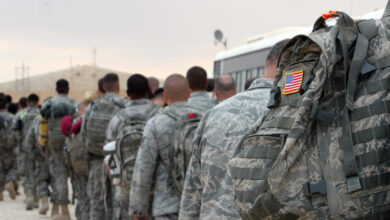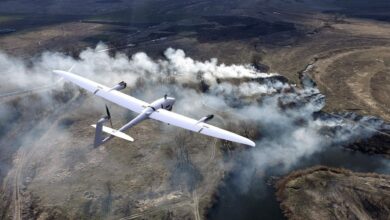British Army Trials Situational Awareness Technologies in Urban Warfare Training
The British Army has tested advanced tactical capabilities for situational awareness in an urban landscape at Swindon, southwest England.
Demonstrations involved technologies that could provide an “extra edge” in future warfare. The training area incorporated a former department store and public buildings to complete the simulation experience for the operators.
Participating warfighters were drawn from the army’s experimental infantry unit, the 2nd Battalion “The Royal Yorkshire Regiment” (2RYORKS).
2RYORKS supports Experimentation and Trials Group (ETG) programs that seek modernized military solutions aligning with the British Army’s recently launched Future Land Operating Concept initiative.
During the trial, the soldiers conducted operations aided by the next-generation Dismounted Situational Awareness (DSA) smartphone worn on body armor.
The DSA device has mission, mapping, and intelligence applications coordinating with new developmental radio systems.

Simultaneously, aerial drones and reconnaissance “throwbots” collected real-time video of the surroundings to provide commanders with the congested environment’s layout.
The remote-controlled throwbots can retain their upward position upon landing after being pitched over walls and into isolated areas.
Meanwhile, the foot soldiers wore night vision goggles to evaluate their performance in night fighting scenarios.
Supporting Real-Life Preparation
According to the British Army, the combination of technologies shown in the Swindon event promotes an advantage in relaying visualization of terrain, corresponding images, and message data for immediate response on the battlefield.
These capabilities can also be used to call in artillery and air strikes against adversarial assets in future deployments, the service added.
“How to hide, survive and use the urban environment as a sanctuary was a challenge but the soldiers adapted to the real-life challenges,” ETG Commander Col. Toby Till explained.
“Using the DSA tool, they could operate effectively and make tactical actions swiftly and effectively.”

Leveraging Insights
After the drill, participants gave feedback regarding the pros and cons of the technologies and equipment used in Swindon.
“Our young soldiers know their voice counts and their experiences with this kit will help shape how we fight in the future,” Till stated.
“It is constant learning, nonstop experimenting and trying new concepts and formations and new ways of training.”












